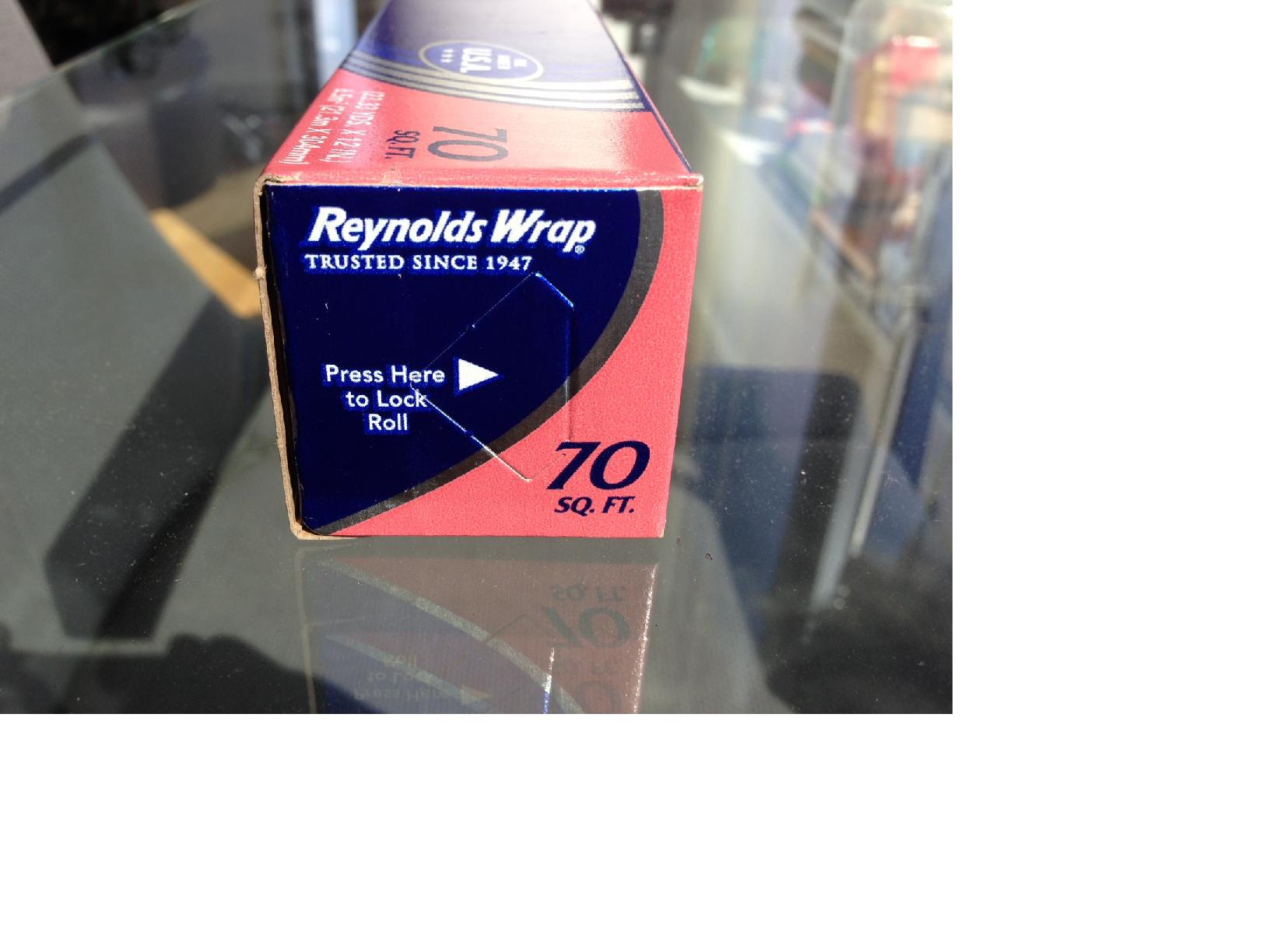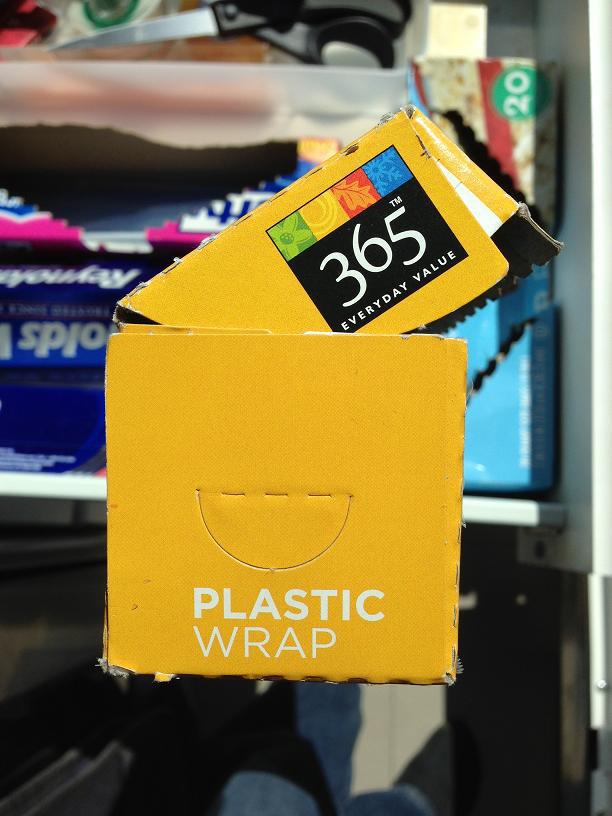In our effort to dispel the mysteries of the modern visual landscape, it’s time to think outside the box. For previous columns, click here; to submit your own suggestions, email us.
In previous editions we’ve addressed some pretty serious issues: the curious differences in the shape of toilet seats, the diabolical gates of fire that guard our wilderness areas, the mysterious wires that float nearly unseen above our streets.
But this week’s mystery is something special. This one is going to blow your effing mind.
Rick Evans, a graphic designer based in Underhill, Vt., wrote in to point out the little impressionable tabs that appear on the ends of boxes of aluminum foil and plastic wrap. My quick informal survey confirms what Rick himself found: that approximately 0 percent of the American population is aware of the existence of these tabs.
That’s an approximate percentage, mind you. Rick Evans knows they exist, and what they’re for. And so does his mom. Do you?
These little tabs are called end locks. Their appointed task is to hold the roll of foil or plastic wrap steady inside the box as you pull on it.
Say goodbye to the endless toil and frustration of the roll coming out of the box as you pull. Or the roll flopping around the box, especially as it shrinks, and floating up against the cutting blade as you pull, causing you to clutch and bend the box to hold it in place.
Just press in the tabs the first time you use the roll, and presto. Welcome to a whole new world.

Note the instructions.
Mark Vanhoenacker.
The boxes of most similar kitchen products, like plastic wrap, also have these tabs. A few products even put explanatory text near the tab, e.g. “Press Here to Lock Roll,” declares the Reynolds Wrap aluminum foil box. (See photo above.) And yet, almost as remarkable as this revolutionary, civilization-altering technology is how few people know about it, even when simple instructions are printed on the box itself.
To shine a light on this particularly dark corner of American ignorance, and on the storied history of end locks more generally, I contacted the helpful Britta Olson, a spokeswoman for Reynolds Consumer Products, makers of Reynolds Wrap and various other rolled wonders of the kitchen drawer.
Turns out end locks have a fascinating history. They were invented for the Apollo missions, to make it easier for astronauts to handle rolls of radiation shielding in space. OK, I made that up. It’s not actually clear who invented end locks. And Reynolds, at least, didn’t add end locks to their aluminum foil boxes until 1996. The explanatory text was added shortly after.
So why don’t more consumers know about these wonderful things? Olson suggests that few consumers look in detail at the boxes of simple but effective products they use every day. “Oftentimes, people do not take much time to study the instructions for well-known things that have ‘obvious’ uses, like tape, paper, or scissors. End locks on our Reynolds Wrap and Diamond foil packaging are somewhat of a hidden feature and benefit,” says Olson.
Maybe knowing about end locks won’t change your life. And maybe, when it comes to getting jazzed about the products we use to wrap leftovers, a little excitement goes a long way. But in an American consumer culture devoted to making home life easier—so that we can work harder and, of course, buy more consumer products—clever creations like end locks rank high among the little things that matter.
That assumes we know about them, of course. But it’s hard to ask for more than explanatory text right there on the box. Olson optimistically notes that when it comes to end locks, there’s a silver (or aluminum) lining to the dark cloud of our national ignorance. Like all the best inventions, the simple ingenuity of the end lock “offers an element of consumer delight as it’s discovered.” I couldn’t agree more.
One more question on aluminum foil. When you’re wrapping something in it, should the shiny side of the foil go on the inside or the outside? I first encountered this question as a child, in an early edition of the utterly wonderful book Why Do Clocks Run Clockwise?, but I couldn’t remember the answer.
It doesn’t matter, says Olson. When it comes to its effectiveness for typical uses—cooking, storing, freezing—the difference between the sides is so slight that it requires laboratory instruments to measure. So unless you’re using it in a laboratory, go wild. (An exception is Reynolds’ non-stick foil: The dull side has the non-stick coating, which should face the food.)
Oh, and why is one side of aluminum foil dull, and one shiny? Because two sheets are rolled together. The dull sides contacted each other, and the shiny sides contacted the steel rollers.
Find something—perhaps some food item in your fridge, undated, unidentifiable, mossy, wrapped in aluminum foil—and wondering what it is? Send a description and a pic to whatisthat@markvr.com.
Previously in What’s That Thing?
U-Shaped Toilet Seats
Truck Fins
Puzzling Packaging
City Steam
Lump on a Wire
Convenience Store Strips
Wall Socket Buttons
Elevator S Button
Pastoral Doodad
Ominous Gizmo
Dashboard Arrow
Mysterious Wires
